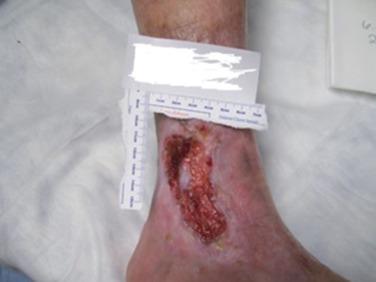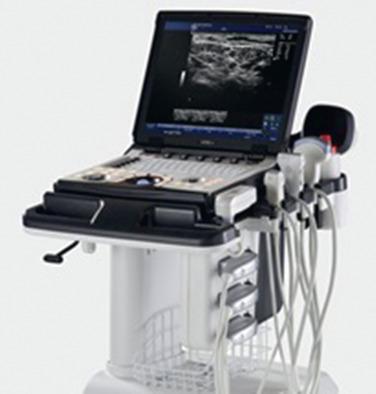Physical Address
304 North Cardinal St.
Dorchester Center, MA 02124
A venous leg ulcer is defined as “an open skin lesion of the leg or foot that occurs in an area of venous hypertension.” Venous ulcers are one of the most common chronic vascular diseases: they are estimated to have a prevalence in the United States of approximately 1%, and the frequency of venous leg ulcers increases with age. Once a venous ulcer occurs, the average time to healing is 22 months, and approximately 5% of patients who develop a venous ulcer never heal, due to patient factors such as obesity or poor compliance, as well as health care system factors, such as inappropriate management or uncoordinated care. The monthly cost of treatment of a venous ulcer is approximately $2500 until healed.
These staggering statistics indicate that venous ulcers are one of the most common and costly medical conditions in the United States, and the American health care system spends a huge amount of its health care dollars trying to heal venous ulcers. One of the reasons ulcers do not heal is that the recent advances in venous ulcer diagnosis and management have not been disseminated to all health care providers, so many venous ulcer patients are receiving outdated venous ulcer care.
The physiologic principle central to understanding the etiology of venous ulcers is that they occur only due to “ambulatory superficial venous hypertension.” This hypertension can be due to valvular incompetence in the deep, perforator, or superficial system, or from occluded deep veins, and the high pressure in the deep system is transmitted to the superficial system, resulting in localized venous hypertension in the skin and subcutaneous tissue. Clinically, a leg with ambulatory superficial venous hypertension becomes hardened and pigmented and is described as having lipodermatosclerosis. The location of the lipodermatosclerosis is primarily in the “gaiter zone” of the ankle, which is both the most dependent portion of the leg when standing, leading to the highest venous pressures, as well as being closest to the largest cluster of perforator veins that transmit the pressure to the superficial system. Formerly called “Cockett” perforators, these perforator veins are currently identified by the distance from the sole of the foot. To help identify the location of leg perforator veins that may need treatment, Geza and Gloviczki dissected all superficial and perforating veins in the leg and identified the most common locations ( Fig. 54.1 ), including those arising from the posterior arch vein, paratibial perforators, and connecting veins between perforator veins and other tributary veins. They found that very few perforator veins connect to the saphenous veins, which is the reason why stripping or ablation of the saphenous veins does not eliminate incompetent perforator veins that transmit the high venous pressure and cause venous ulcers.

The combination of physical exam and duplex ultrasound is the best method of diagnosing the presence of venous disease in a patient with a leg ulcer, to determine the extent of venous disease, the need for any further workup, and indications for treatment. The initial evaluation should determine not only if a venous ulcer is present but also if there are other diseases or conditions which coexist, such as diabetes, arterial insufficiency, and infection. In addition, the age of the ulcer, its depth and appearance, and the previous treatments to heal the ulcer, as well as initiating factors, such as trauma, biopsy, or chronic edema, all contribute to understanding how the ulcer developed, how it has been treated, and why it has not healed. A photograph of the ulcer ( Fig. 54.2 ) is useful to document its size and depth as well as the extent of edema and infection; the photo can also be used for planimetry, which is a precise measurement of venous ulcer dimensions.

Duplex ultrasound is the best method for determining whether chronic venous insufficiency is causing a venous leg ulcer. It is a cost-effective, accessible, and accurate diagnostic tool. When further anatomic definition is needed, particularly of the deep veins above the inguinal ligament, computed tomography (CT) venography or magnetic resonance (MR) venography may be used to supplement ultrasound. Intravascular ultrasound (IVUS) is an additional imaging modality used to determine the degree of iliac vein and vena caval stenosis by providing three-dimensional images, but it requires puncture of the femoral vein and therefore is primarily used during venous stenting procedures.
The duplex ultrasound should be done using standardized diagnostic protocols by technologists trained in the appropriate techniques. Ultrasound of the deep, superficial, and perforator veins must be performed to determine the location and extent of venous incompetence. Color Doppler and pulsed wave Doppler with a linear 7.5 to 10 MHz transducer can directly visualize flow and venous reflux ( Fig. 54.3 ). The examination must include evaluation of the common femoral vein and other deep veins, saphenous veins, perforator veins, and tributaries ( Box 54.1 ). Indirect evidence of proximal iliac vein or vena cava obstruction can also be assessed by duplex ultrasound of the common femoral vein, where loss of normal respiratory cycling and loss of augmentation with compression occur with proximal venous disease. In this same region the saphenofemoral junction should be assessed for reflux, and, if reflux is present, the great saphenous vein should then be evaluated along its course for patency and duration of reflux, as well as looking for any incompetent accessory, perforator, or tributary veins. When patients have lateral ankle ulcers, the popliteal fossa should also be assessed for small saphenous vein incompetence. After the truncal and deep veins have been evaluated, the calf veins, including the deep and perforator veins, should be evaluated for reflux, as well as any tributary veins near the ulcer. Duplex ultrasound criteria for abnormal veins in patients with venous leg ulcers include incompetence of the deep system (veins with a maximum vein diameter >3.5 mm and reflux >1 second) and superficial and perforator veins incompetence with a vein diameter greater than 3.5 mm and reflux greater than 500 ms.

Measurement of diameter and duration of reflux of each superficial vein
Identification of tributary veins that are adjacent to the venous ulcer
Documentation of refluxing perforating veins adjacent to the venous ulcer
Determination of deep venous reflux in the common femoral, femoral, and popliteal veins
Assessment of signals in the common femoral vein
The CEAP (Clinical Etiologic Anatomic Pathophysiologic) classification system was developed to standardize venous diagnosis and treatment when caring for patients with venous insufficiency ( Box 54.2 ). Venous ulcers are classified as CEAP 6, and once they heal, they are moved to the CEAP 5 classification level. The CEAP clinical classification score can most precisely be defined after imaging of the superficial, deep, and perforator veins of the leg with duplex ultrasound.
Telangiectasias (spider veins)
Varicose veins
Edema
Lipodermatosclerosis
Healed venous ulcer
Open venous ulcer
Primary
Secondary
Congenital
Become a Clinical Tree membership for Full access and enjoy Unlimited articles
If you are a member. Log in here